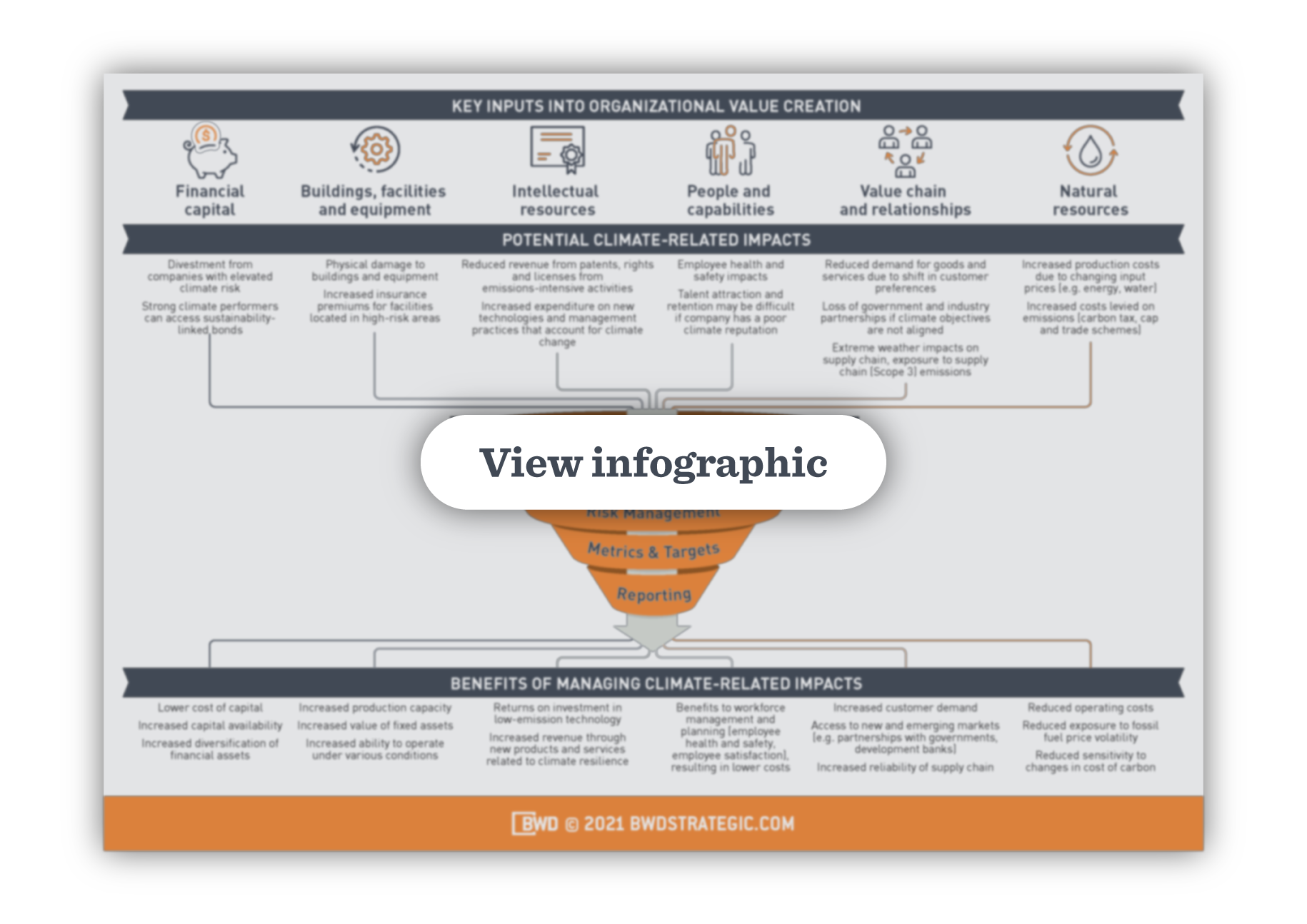Chances are that investors, employees and customers are increasingly calling for you to do more about climate change. These demands are here to stay, and stakeholders are sophisticated enough to tell when a company’s efforts lack authenticity.
One sign of inauthenticity is when a company’s reporting doesn’t directly address the issues that its stakeholders deem to be important. So if you’re only just starting to consider how climate change will impact your organization and want to ensure an authentic response, it pays to understand what investors and other stakeholders want to know.
As climate-related corporate reporting matures, we are gaining new insights into exactly what information is most important when considering an organization’s approach to climate change. In its 2020 Status Report, the Task Force on Climate-related Financial Disclosures (TCFD) reported that expert users were nearly unanimous in rating a company’s description of how climate-related issues have affected its business and strategy as extremely useful, making it the ‘most useful’ piece of information for financial decision-making.
According to the TCFD, therefore, the most useful thing to do is to arrive at a description of how climate-related issues affect your business and strategy. This is an encouraging finding, because understanding and describing potential climate-related impacts on your business does not require expensive quantitative modelling or bespoke scenario analysis.
Instead, it requires understanding the resources that your company relies on to create value, and then articulating the impacts that climate change has on these resources, both positive and negative. This can be done through the inclusion of a tailored climate narrative, tables and infographics in your standard reporting documents.
The below infographic provides a starting point. Leveraging the work of the TCFD, the infographic identifies how climate change may impact your organization’s key inputs (such as equipment, employees, water, and financial capital). It also outlines benefits (illustrated in the diagram with respect to organizational inputs) that companies may expect in the long term when they incorporate climate change into their corporate governance, strategy, risk management, and reporting.


